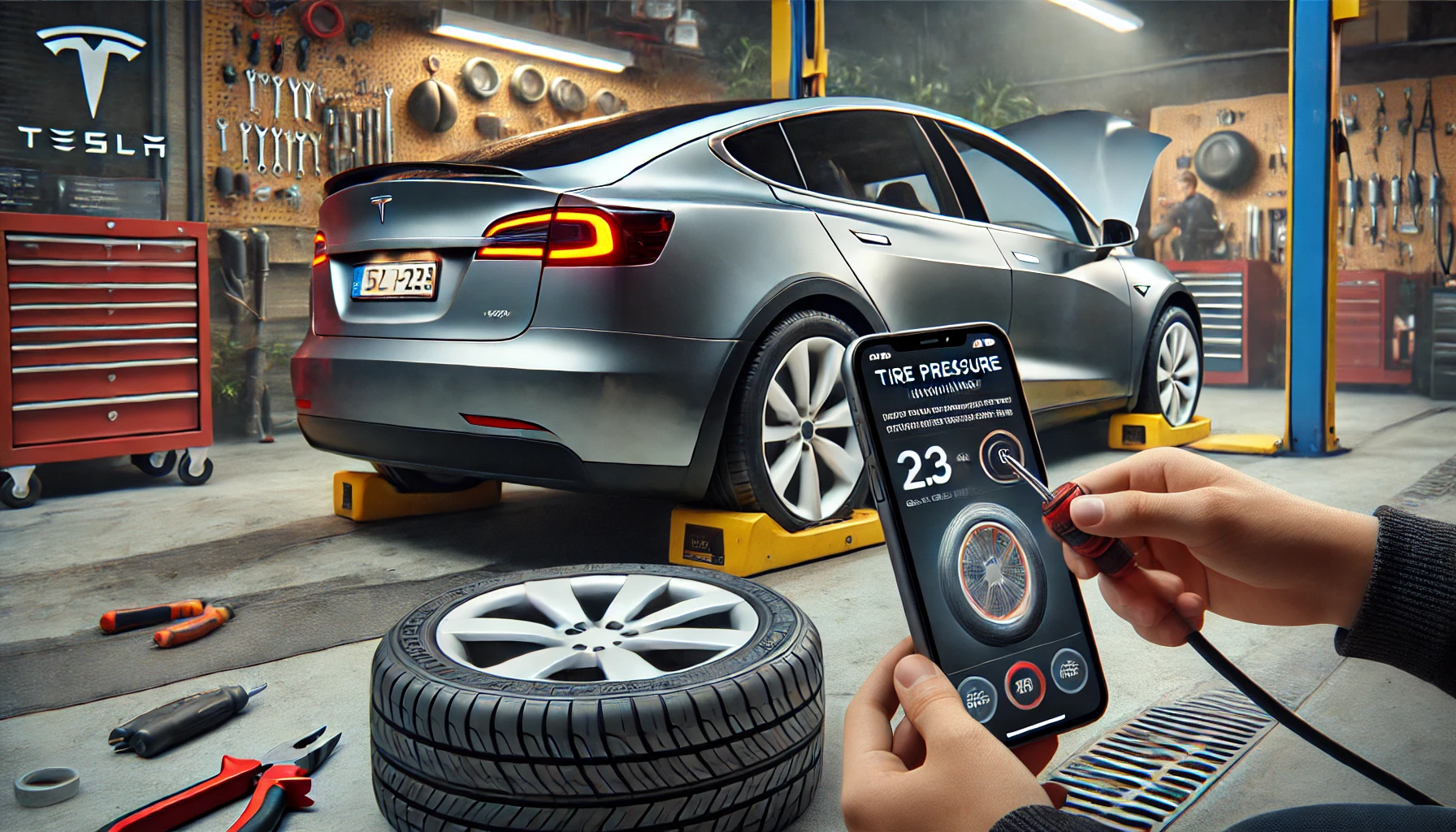
Common Causes of Tire Pressure Sensor Fault in a Tesla Model Y
- Low Tire Pressure: The most common reason for a TPMS alert is low tire pressure. For the Model Y, the recommended tire pressure is typically 42 PSI, depending on the tire type and conditions.
- Tire Replacement or Rotation: After rotating or replacing tires, the system may need recalibration to recognize the sensors properly, which could lead to a TPMS warning.
- Sensor Damage or Failure: TPMS sensors can wear out or become damaged, especially from impacts or over time. A faulty sensor will trigger a warning that persists until it’s replaced.
- Sensor Battery Depletion: Each sensor has a battery that lasts about 5-10 years. Once the battery is drained, the sensor can no longer send pressure readings, resulting in a fault.
- Software Glitches: Sometimes, the TPMS alert can be caused by software glitches. These can often be resolved by a software update or a system reset.
- Extreme Weather Conditions: Rapid changes in temperature, or driving in high-altitude environments, can cause temporary low-pressure warnings.
How to Fix the Tire Pressure Sensor Fault in a Tesla Model Y:
- Check Tire Pressure:
- Use the Tesla touchscreen to check the pressure in each tire. Alternatively, you can use a manual tire pressure gauge. Ensure all tires are inflated to the recommended 42 PSI (or as per your manual).
- Inflate any underinflated tires to the proper level.
- Reset the TPMS System:
- Go to the Controls menu on the touchscreen.
- Navigate to Service > Tire Pressure Monitor > Reset Sensors.
- Drive the car for about 10-15 minutes at speeds above 15 mph for the sensors to recalibrate.
- Check for Software Updates:
- Go to the Software tab on the touchscreen and ensure your Tesla Model Y is running the latest software version. Install updates if available, as they might resolve any software-related TPMS warnings.
- Replace a Faulty Sensor:
- If the warning persists after resetting, a sensor might be faulty. Tesla service centers can scan the system to identify and replace the malfunctioning sensor.
- The cost to replace a sensor is usually between $50 and $150, depending on parts and labor.
- Environmental Factors:
- If driving through extreme weather or high-altitude areas, allow the car some time to adjust. False warnings can occur due to pressure changes related to these factors, but they typically go away after driving.
